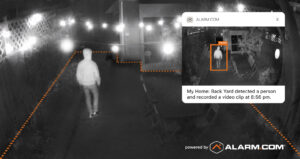OpenAI’s latest Sora 2 AI is available in Thailand, Vietnam and Taiwan today, allowing anyone in these locations to use the Sora video generation app to create realistic-looking clips that could easily fool the eye.
The three Asian markets are among the first to get the latest AI-powered video tools after their launch last month in the United States and Canada. In under five days, that had generated a million downloads.
Notably, OpenAI also lists Japan and Korea as supported countries and regions for Web and mobile access on its website, though the two East Asian markets were not mentioned in the media release shared with reporters a short while ago.
OpenAI’s Asian launch arrived with AI-generated videos of head oncho Sam Altman appearing in videos featuring local attractions.
In a short video clip set in Taiwan, for example, he is seen speaking Taiwanese-accented Mandarin to two students in a canteen.
In the Thailand clip, Altman eats a spicy dish at a roadside stall while the Vietnamese clip has him dressed in traditional costume and playing music from an instrument made from bamboo.
All three clips showcase the improvements made by the latest Sora 2 AI model, which lets users simply type in what they want to create in a text prompt to generate realistic videos.
Unlike the earlier Sora 1, it makes fewer mistakes like unrealistically rotating a dog’s body as it moves around or generating multiple limbs for a gymnast performing in a competition (see comparison here).
It’s interesting that OpenAI has chosen Thailand, Vietnam and Taiwan – possibly along with Japan and Korea – to launch its new tool, right after North American markets near home.
No reasons were given by the company but one might guess at the dynamic content creation community in these markets that might have attracted the company to unleash its latest app.
For now, OpenAI has said that Thai language is supported in Sora 2 – don’t be surprised if other Asian languages are on the way.
Notably, OpenAI is facing pressure from original content creators in parts of Asia for making use of their creations without permission.
Two weeks ago, the Japanese government asked OpenAI to seek approval in advance from copyright owners, who should be allowed to ask for copyright-infringing content to be deleted. Some of Japan’s anime artists have also viewed AI in animation with wariness and even contempt in the past.
Still, that had not stopped Studio Ghibli-style AI slop from being generated earlier this year when OpenAI enabled users to do so easily. That, though, was for still images.
Now, with Sora 2, users in a growing number of countries can generate a wide range of videos enough easily. There’s even a “cameo” mode that lets users to quickly generate a video of themselves or even their cat in funny or fascinating situations, perhaps at the top of Mount Everest or something silly.
So, more AI slop on the way? At least there will be more Asian-focused content. Some might even be entertaining.






